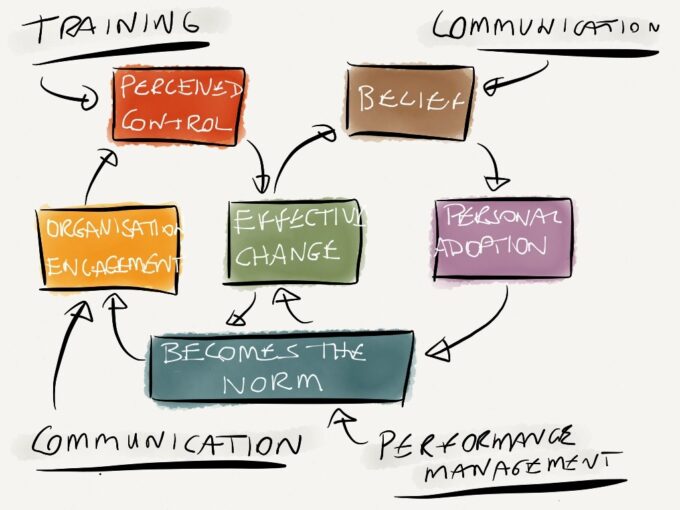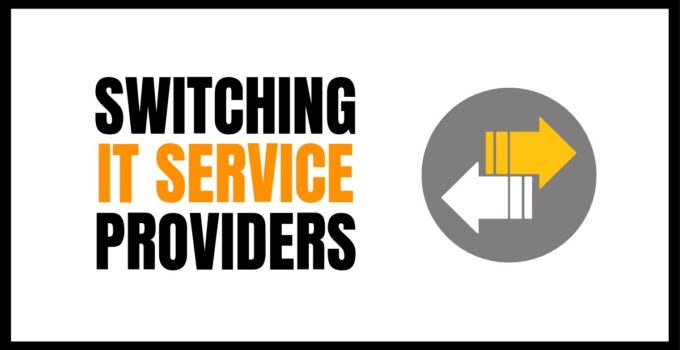Switching IT providers is not just a technical shift; it’s a strategic business decision. The right IT partner can drive efficiency, innovation, and growth, while a mismatch can hinder your progress and productivity. This blog aims to guide businesses through this pivotal change.
We’ll explore the crucial signs indicating the need for a new IT provider and share comprehensive strategies for ensuring a smooth and effective transition. Understanding when and how to make this switch can be transformative, leading to enhanced operational capabilities and competitive advantages in an increasingly digital marketplace.
Signs It’s Time to Switch IT Providers

Source: insights.workwave.com
If your business frequently grapples with technical glitches, unresponsive support, or outdated technology, these are glaring signs that it’s time to reconsider your IT partnership. Consistent technical issues can disrupt business operations, leading to downtime, lost productivity, and frustrated customers.
Poor communication and a lack of proactive support from your IT provider can exacerbate these issues, creating a reactive environment where problems are only addressed after they’ve impacted your business.
Such scenarios highlight a misalignment between your business needs and the capabilities of your current IT provider, signaling the need for a change. Switching to a provider that aligns more closely with your operational needs and growth goals is not just beneficial; it’s often necessary for maintaining a competitive edge.
Assessing Your IT Needs
Before embarking on the journey to find a new IT provider, it’s crucial to assess your current IT infrastructure and services. This assessment should be comprehensive, considering not only your immediate needs but also your long-term business goals.
Evaluate the gaps in your current IT setup, including areas like cybersecurity, data management, software and hardware efficiency, and user IT support. An in-depth understanding of these elements will guide you in identifying the specific services and support you need from a new IT provider. This step ensures that your future IT partnership will be more than a vendor relationship; it will be a strategic alliance that propels your business forward.
Researching New IT Providers

Source: makegoodbusiness.com
Finding a new IT provider requires careful research and consideration. Look for a provider with a strong track record in your industry and the ability to meet your specific IT needs. Assess their experience, reputation, customer reviews, and case studies. It’s important to consider not only their technical capabilities but also their customer service and support ethos.
Evaluate their approach to problem-solving, adaptability to technological advancements, and their ability to offer tailor-made solutions. Cost is also a critical factor, but it shouldn’t be the sole determining factor. The goal is to find a balance between quality services and cost-effectiveness, ensuring that your new IT provider is a valuable investment in your business’s future.
Requesting References and Case Studies
When you narrow down potential IT providers, ask for references and detailed case studies. This step is crucial in understanding how they have handled similar situations or challenges in the past. References from current or previous clients can provide real-world insights into the provider’s responsiveness, reliability, and overall service quality.
Case studies, on the other hand, can showcase their problem-solving capabilities and their success in implementing solutions in scenarios similar to yours. This evidence-based approach helps in making an informed decision, ensuring that your new IT partner has a proven track record of success and customer satisfaction.
Creating a Transition Plan
A well-structured transition plan is essential for a smooth changeover to your new IT provider. This plan should include a comprehensive timeline, clear responsibilities, and contingency plans for potential challenges. It should cover all aspects of the transition, from data migration to staff training.
Collaboration with both your outgoing and incoming IT providers during this phase can ensure that all technical and contractual details are handled efficiently. A clear plan minimizes disruption to your operations and sets the stage for a successful partnership with your new IT provider.
Data Backup and Security
Data is a valuable asset for any business, and its security should be a top priority during the transition. Ensure that your data is backed up and secure throughout the process. Work with your new IT provider to implement robust security measures and data protection protocols.
This step is crucial to prevent data loss, breaches, and other security incidents during the transition. It’s not just about transferring data; it’s about safeguarding your business’s integrity and maintaining the trust of your customers and stakeholders.
Communication and Training

Source: changefactory.com.au
Effective communication is key during the transition to a new IT provider. Ensure that there is clear and ongoing communication between your team, the outgoing provider, and the new provider. This transparency helps in addressing any concerns and aligning expectations.
Additionally, invest in training your staff to adapt to the new systems and processes. Familiarizing your team with the new IT environment is essential for a smooth transition and for maximizing the benefits of your new IT infrastructure.
Managing Costs
Transitioning to a new IT provider involves various costs, some apparent and others hidden. It’s important to plan and manage these costs effectively. Negotiate clear terms with your new provider to avoid unexpected expenses.
Understand the pricing structure, including any setup fees, ongoing maintenance costs, or charges for additional services. Planning and budgeting for these expenses will help you maintain financial control and avoid any surprises down the line.
Testing and Quality Assurance
Before finalizing the switch, conduct thorough testing and quality assurance to ensure that all systems and services are functioning as expected. This step is crucial for identifying and resolving any issues before they impact your business operations.
Testing should cover all aspects of your IT infrastructure, including hardware, software, network performance, and security protocols. Quality assurance processes help in confirming that your new IT environment is robust, secure, and ready to support your business needs.
Monitoring and Feedback

Source: jmcc.ie
Once the transition is complete, continuously monitor the performance of your new IT provider. Regular evaluations and feedback are important for ensuring that they are meeting your expectations and adapting to your evolving business needs.
Open lines of communication allow for ongoing improvements and adjustments, ensuring that your IT services remain aligned with your business goals.
Conclusion
Switching IT providers is a significant decision, but with the right approach, it can lead to substantial benefits for your business. By recognizing the signs that it’s time to switch, assessing your IT needs, conducting thorough research, and following a structured transition plan, you can ensure a smooth and effective change.
Remember, a proactive approach in choosing and transitioning to a new IT provider can be a catalyst for growth and innovation in your business.







